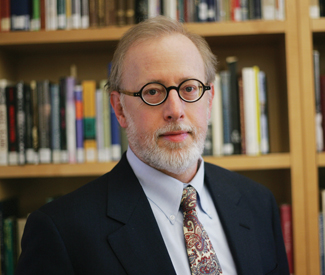caitlin@sfbg.com
WOMEN’S HISTORY MONTH There’s all of not much planned, officially speaking, for Women’s History Month this year in San Francisco. A March 6 ceremony honored a lady from each district in the Board of Supervisor’s chamber, a reception followed with refreshments and Ed Lee’s mustache proclaimed she who is Woman of the Year. (His selection hadn’t been announced by the time we went to press, but I’m pulling for a double honoree this year: fashion babe twins Marian and recently-deceased Vivian Brown.)
Truth is, not many people seem stoked on the commemorative month, which was officially created in 1987 and annually proclaimed by the President starting in 1994. The Atlantic ran a story last week that accused Women’s History Month as a symbol of irrelevant tokenism. Honestly, throughout the course of assembling this list I was surprised at just how few explicit Women’s History Month events are taking place in the Bay.
Maybe having a month doesn’t solve the problems that plague women these days, but in my book that doesn’t mean we should scrap the thing altogether. We have a proclamation, let’s use it!
Here’s some ways to do just that. Sure, little of the happenings on this page are so backwards-looking as to fit neatly into the “History Month” rubric. But the debut exhibition of an art collective on the rise (Black Salt Collective, March 17), a demonstration that’ll morph into cross-cultural performance in honor of domestic workers’ rights (Domestic Workers Bill of Rights demonstration and performance, Fri/8), a quilting show (SF Quilters Guild biennial show and sale, Sat/9-Sun/10) — the fact is, we’re making history every day. This month we just have extra encouragement to do so.
HER GIRL FRIDAY
This group from Brooklyn holds readings that promise salient takeaways for women in the media world, and its first West Coast event should be rad: editrix par excellence (who has mad Tumblr game, folks) Ann Friedman headlines, with chronicler of Latin America Martina Castro, multimedia journalist Katy Newton, and sex trade filmmaker Mimi Chakorova. One-time Guardian art director DJ Mirissa Neff will be posted up behind a mixer to soundtrack the thing, and: cocktails.
Thu/7, doors open 6pm, readings 7pm, free. 111 Minna, SF. facebook.com/hergirlfriday
“WHAT ABOUT THE CHILDREN?”
A mother and Black Panther who emerged from incarceration to become a professor of sociology, Ericka Huggins seems well qualified to speak on the power of restorative justice. She teaches relaxation and resiliency workshops for schools and community groups, so this talk promises to be a feel-good look at the tough problem that is our justice system.
Thu/7, 7-9pm, $15. California Institute of Integral Studies, 1453 Mission, SF. www.ciis.edu
DOMESTIC WORKERS BILL OF RIGHTS DEMONSTRATION AND PERFORMANCE
Join the magically diverse coalition of women, people of color, and youth groups to celebrate AB 241, proposed legislation that would shore up the rights of domestic workers in the state of California. Speakers will hoist bullhorns in front of the Federal Building, then everyone is welcome to Sixth Street’s Filipino community center, where cross-cultural performances will celebrate International Women’s Day.
Fri/8, rally 5pm, SF Federal Building, 450 Golden Gate, SF. Performances 8pm, Bayanihan Community Center, 1010 Mission, SF. www.babaesf.org
OAKLAND INTERNATIONAL WOMYN’S DAY FESTIVAL
Start your day with an ashtanga yoga class at this fest, then stick around for a day of rad artists: Culture Shock’s hip-hop dance, neo-soul funkster Mama Crow, rapper-political science student Kaila Love, queer bluesperson Enajite Loicy Pela, and more. The day’s theme is raising awareness about violence against women, transfolks, people of color, everyone.
Sat/9, 11am-5pm, free. The Web, 355 12th St., Oakl. www.iwdfest.com
“SEVEN FLOWERS FOR SEVEN MURALISTS”
In honor of the original seven female muralists who created the breathtaking “MaestraPeace” work that covers the outside of this community center, the Women’s Building is inviting all comers to deck its sidewalk with chalk to create a massive bouquet of flowers.
Sat/9, 1-2pm, free. Women’s Building, 3543 18th St., SF. www.womensbuilding.org
STOP VIOLENCE AGAINST WOMEN RALLY AND MARCH
From Ohio to India, we’re seeing so many attacks against women worldwide that something’s gotta be done. Anti-violence demonstrations and marches, like this one hosted by Women Organized to Resist and Defend (WORD) have seen great turnout of late, so go add your voice to its hue and cry.
Sat/9, noon, free. Dolores Park, 19th St. and Guerrero, SF. www.defendwomensrights.org
SF QUILTERS GUILD BIENNIAL SHOW AND SALE
From Gee’s Bend to knit graffiti posterchild Magda Sayeg, textile art has long been used by women trying to make a (needle)point. Not all the quilts at the SF Quilters Guild’s biennial showing will be militant, but they do speak to the mastery of what is often dismissed as “mere” folk art. Check out the impressive works of stitch, along with quilting challenges and demonstrations. Master quilt appraiser Nancy Bavor will also be on hand to evaluate any piece that you bring in, for a fee.
Sat/9, 10am-5pm; Sun/10, 10am-4pm, $9-10 two-day ticket. Concourse Exhibition Center, 635 Eighth St., SF. www.sfquiltersguild.org
WOMEN WHO CODE MEET-UP
The tech community’s ability to throw successful happy hour networking events is unrivaled. Jump into the tide for Women’s Month with this group, which is open to all female-identified people hoping to fine-tune or share their coding skills. Bring a project, or jump in on one of the tutorials providing for all skill levels. Remember to register as a meet-up member and RSVP before you head over.
Tuesdays, 6:30pm, free. March 12 location: Apportable Inc., 371 Fifth St., SF. www.meetup.com/Women-Who-Code
MAQUILAPOLIS
A documentary following women workers who refuse to take social injustice sitting down. One of the film’s stars is Carmen Durán, a maquiladora at one of Tijuana’s poverty wage-paying factories run by multinational corporations. When her company up and leaves for Indonesia’s even looser labor laws, Durán goes activista.
March 13, 7pm, $5-10 donation suggested. 2969 Mission, SF. www.answersf.org
VIVA LA VIDA
Indulge your Fridamania with this Spanish language play, which revolves around an intimate monologue delivered by Frida Kahlo herself, as the iconic Mexican artist preps a Dia de los Muertos party for Diego Rivera, Leon Trotsky, and father of surrealism André Breton.
March 16, 7pm, $16. Mission Cultural Center for Latino Arts, 2868 Mission, SF. www.missionculturalcenter.org
BLACK SALT COLLECTIVE LAUNCH SHOW
A jewelry maker raised in Bolivia, a painter who takes inspiration from her work with disabled adults, a multimedia artist set alit by the third eye, black soul, and the natural world — this is Black Salt Collective, which officially starts its journey with today’s exhibition. Pick up some art, sip some sangria, and reflect on what it means to represent “culture” — the stated goal of this all-female group is to express contemporary identity without the baggage of Western world anthropology tropes.
March 17, 1-7pm, free. Artists’ Television Access, 992 Valencia, SF. blacksaltcollective.tumblr.com
“KNOW YOURSELF, LOVE YOURSELF: SEXUAL EMPOWERMENT FOR WOMEN”
Sex educators Jessi Fischer and Julianne Carroll want to help you untangle the mess of messages we get about what female sexuality is supposed to be. Madonna-whore, no more! After this workshop, hopefully that’ll be the case in your grey matter.
March 18, 6:30-8:30pm, $20-25. Good Vibrations, 1620 Polk, SF. www.goodvibes.com
LAS TRES MARIAS
Musicians Cynthia Alexander, Diana Gameros, and Radmilla Cody weave together their experiences as a border town Mexican, a Filipina, and a former Miss Navajo Nation to create musical works that explore migration and economic struggle.
March 22, 8pm, $20-25. La Peña Cultural Center, 3105 Shattuck, Berk. www.lapena.org
HALF THE SKY
Based on a book by New York Times journalist Nicholas Kristhof, this documentary roams 10 countries (deploying the talents of Hollywood actresses like Eva Mendes, America Ferrara, and Gabrielle Union as hosts) to create a panoramic look at global women’s issues today. Full disclosure: the event is sponsored by the Guardian and Renaissance Entrepreneurship Center — and I’m hosting a post-screening discussion. Please note the cocktail half-hour before movie.
March 25, doors 6:30, screening 7pm, free. Artists’ Television Access, 992 Valencia, SF. tinyurl.com/halftheskyscreening
SISTER SPIT: THE NEXT GENERATION READING
The queer, feminist, awesome Sister Spit collective has been making some serious moves of late. Ali Liebegott just published Cha-Ching! through City Lights Sister Spit imprint (it’ll be feted at that book store on March 27) and founder Michelle Tea’s young adult novel A Mermaid in Chelsea Creek (due out this spring) is amaze-balls — and we get to hear them read for free today? Lit history, folks, before your eyes.
March 31, 2pm, free. San Francisco Main Library, 100 Larkin, SF. www.sfpl.org












